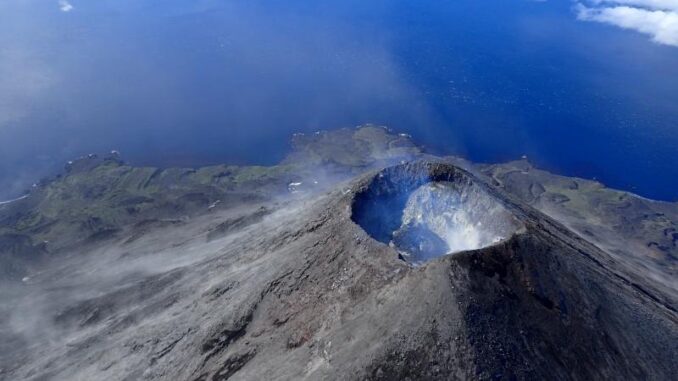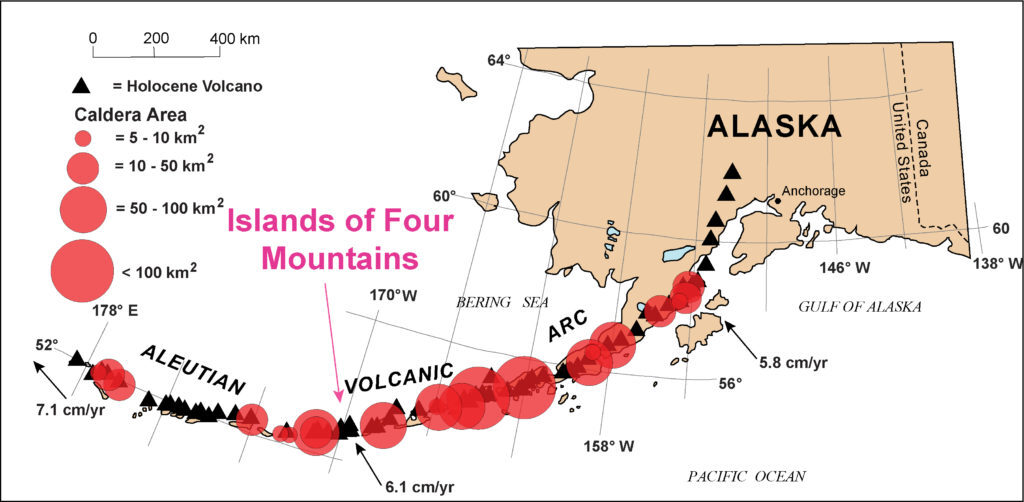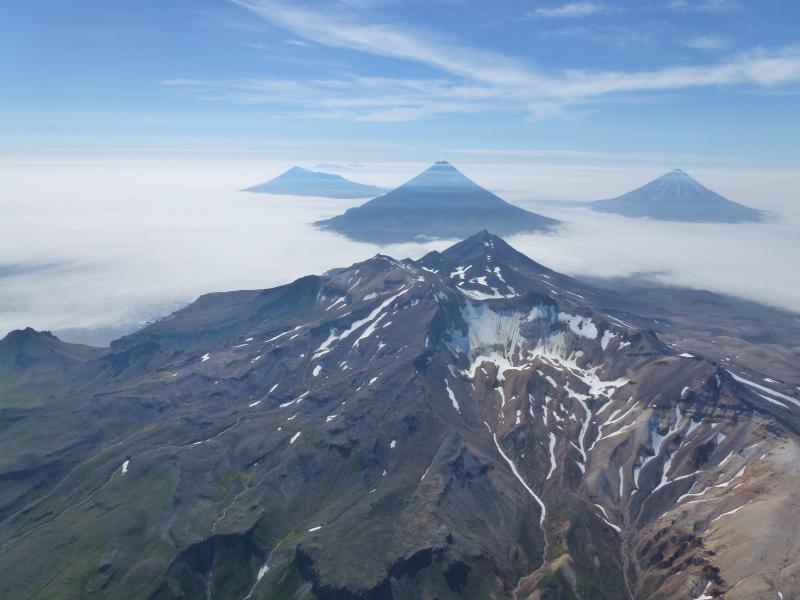
Stretching across the North Pacific from Alaska to Russia the Aleutian Islands archipelago consists of about seventy islands ranging from small to large, boasting fifty-seven volcanoes. The island chain makes up the northern boundary of the Pacific Ring of Fire. In the central Aleutians lay the Islands of the Four Mountains on which sit the cones of six stratovolcanoes: Carlisle, Cleveland, Herbert, Kagamil, Tana, and Uliaga. Mount Cleveland is regarded as the most active North American volcano of the last two decades.

Eruptions from the volcano have lofted ash into the atmosphere as high as 15,000 to 30,000 feet above sea level, presenting a hazard to aircraft using commercial flight routes between Asia and North America. As a result, volcanologists have been studying Mount Cleveland to determine the extent of the danger it poses. During this ongoing study, they realized that the evidence they’ve seen so far indicates that all of the volcanoes on the Islands of Four Mountains may in fact be sitting atop a massive undersea caldera similar in size to the Yellowstone supervolcano. If this hypothesis is true, then all six volcanoes are connected to a single massive magma chamber under the islands.

The researchers, who represent the USGS Alaska Volcano Observatory, the Carnegie Institution for Science, and ten other scientific and academic organizations, have presented a paper outlining their findings to date, as well as their new supervolcano hypothesis, at the American Geophysical Union’s (AGU) Fall Meeting 2020, which was held this past December.
In the Aleutians the research expedition season is short, with harsh weather in the region most of the year. The scientists hope to resume their field studies this coming summer, and hopefully determine if their hypothesis is right or wrong.
Question Of The Night: Have you seen a volcano in it’s active state? Would you like to, is it on your bucket list?
